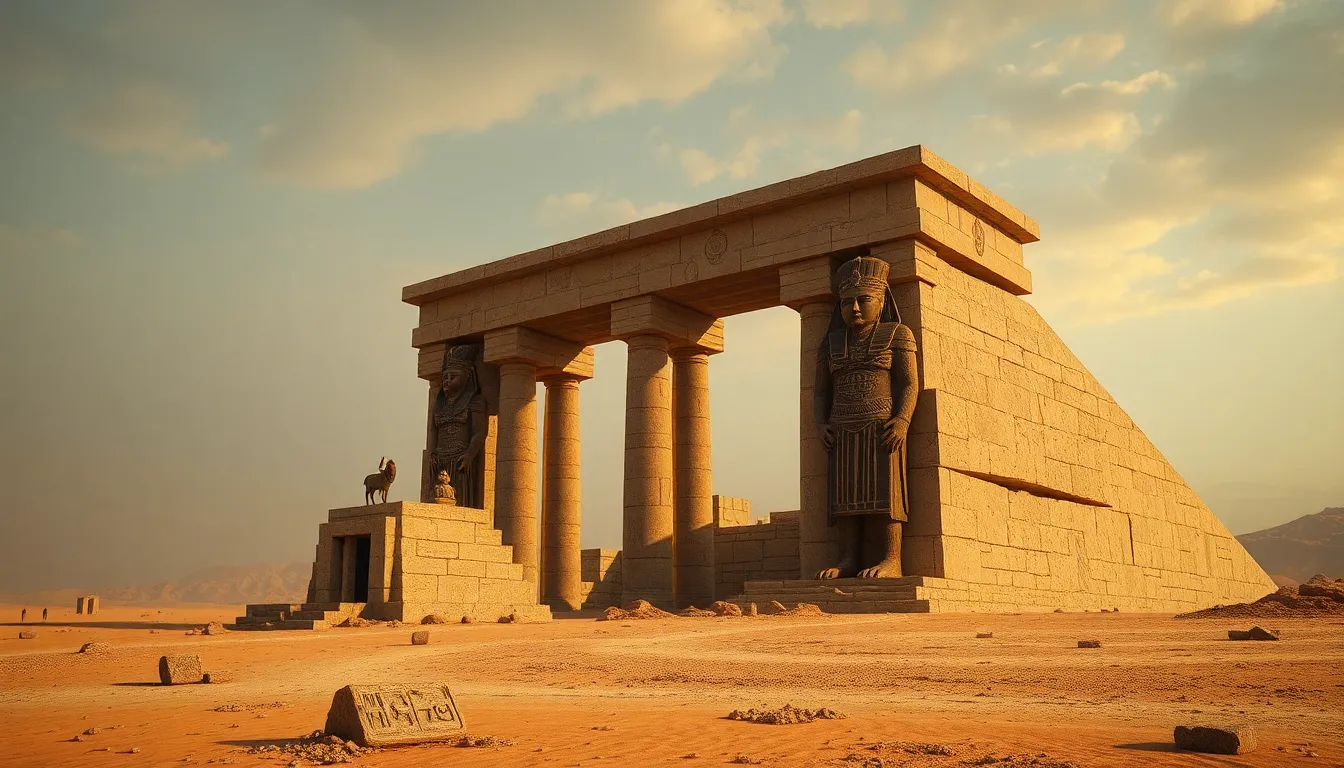Funerary Literature: The Voice of the Ancients
I. Introduction
Funerary literature encompasses a wide range of texts and inscriptions created by ancient cultures to commemorate the dead, guide souls to the afterlife, and reflect on the nature of mortality. This body of literature provides invaluable insights into how different civilizations understood death and the afterlife, revealing their beliefs, values, and practices.
Understanding funerary literature is crucial not only for appreciating the artistic and literary achievements of ancient peoples but also for grasping the profound ways in which they confronted the universal human experience of death. This article will explore the historical context, types, themes, and cultural significance of funerary literature, as well as its relevance today.
II. Historical Context of Funerary Literature
The evolution of funerary texts can be traced across various cultures, each contributing unique perspectives and practices regarding death. From the elaborate tomb inscriptions of Ancient Egypt to the poignant epitaphs of the Greeks and Romans, funerary literature serves as a testament to the ways societies have grappled with mortality.
- Ancient Egypt: Known for its rich funerary texts, such as the *Book of the Dead*, which provided guidance for the deceased in the afterlife.
- Mesopotamia: The Epic of Gilgamesh explores themes of death and immortality, reflecting the civilization’s views on the afterlife.
- Greece: Epitaphs and funerary orations celebrated the lives of the deceased and often included reflections on their virtues.
- Rome: Funerary inscriptions and epitaphs provided a means of immortalizing the memory of the dead while also reflecting social status.
The role of religion and mythology in shaping funerary practices is evident in all these cultures, as beliefs about the afterlife influenced how the dead were honored and the texts created to memorialize them.
III. Types of Funerary Literature
Funerary literature can be categorized into several types, each serving distinct purposes within the context of death and remembrance.
- Epitaphs and inscriptions: Short texts inscribed on tombstones or monuments that commemorate the deceased, often highlighting their achievements and virtues.
- Mortuary texts and rituals: Elaborate texts, such as the Egyptian *Book of the Dead*, that served as guides for the deceased’s journey through the afterlife.
- Literary works and poetry: Creative expressions that reflect on death and the afterlife, often exploring the emotions of mourning and loss.
IV. Themes and Motifs in Funerary Literature
Common themes and motifs in funerary literature reveal much about ancient attitudes toward death and the afterlife.
- The afterlife and immortality: Many texts emphasize the belief in an afterlife, depicting journeys to realms of paradise or judgment.
- Mourning and remembrance: Expressions of grief and the importance of remembering the deceased are central to many funerary texts.
- The journey of the soul and judgment: Many cultures included narratives about the soul’s journey after death, often involving trials or assessments of the deceased’s life.
V. Funerary Literature as a Reflection of Cultural Values
Funerary literature provides a mirror to the cultural values of ancient civilizations, revealing their attitudes toward life, death, and social structures.
- Attitudes toward death and dying: Different cultures exhibit varying levels of acceptance, fear, and reverence for death, which is often reflected in their literature.
- Social hierarchies: The significance of the deceased often correlates with their social status, as evidenced in the lavish funerary texts and rituals dedicated to the elite.
- Gender roles: Funerary literature can also highlight gender dynamics, showcasing how men and women were remembered and honored differently.
VI. The Language and Style of Funerary Literature
The language and style of funerary literature are marked by rich symbolism and poetic forms, often employing various rhetorical devices.
- Use of symbolism and metaphor: Symbols such as the ankh in Egyptian texts represent life, while metaphors often convey complex ideas about death and the afterlife.
- Poetic forms: Many funerary texts utilize verse and poetic structures to enhance emotional impact and memorability.
- The role of oratory: Funerary speeches and performances played a vital role in commemorating the dead and were often characterized by elaborate oratory.
VII. Modern Interpretations and Relevance
Contemporary scholars continue to explore ancient funerary texts, providing new insights into their meanings and significance. The influence of funerary literature extends beyond academic study, impacting modern literature, art, and cultural practices.
- Scholars’ perspectives: Modern interpretations often seek to understand the socio-political contexts of these texts and their impact on contemporary beliefs about death.
- Influence on modern literature and art: Themes from ancient funerary literature resonate in contemporary works, inspiring artists and writers to engage with ideas of mortality.
- Relevance today: Ancient beliefs about death, as expressed in funerary literature, continue to shape current practices surrounding mourning and remembrance.
VIII. Conclusion
In summary, funerary literature serves as a vital record of how ancient cultures understood and confronted death. Through its diverse forms and themes, it reveals enduring human concerns about mortality, identity, and the afterlife. The legacy of these texts continues to resonate today, offering us a glimpse into the voices of the ancients and their timeless reflections on the nature of existence.
As we explore these ancient artifacts, we gain a deeper appreciation for the ways in which humanity has always sought to understand life and death, fostering a connection across time and culture in our shared human experience.




